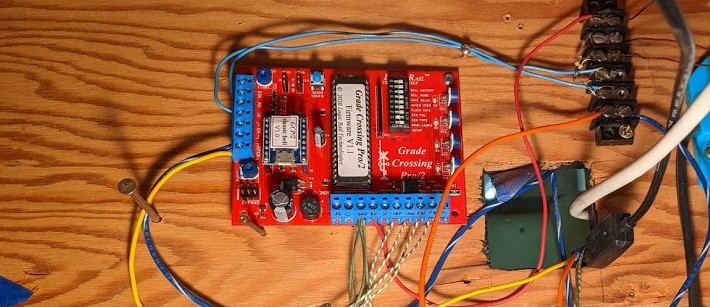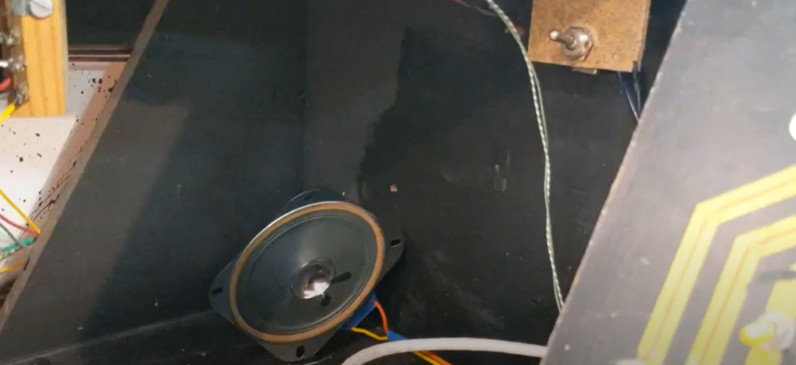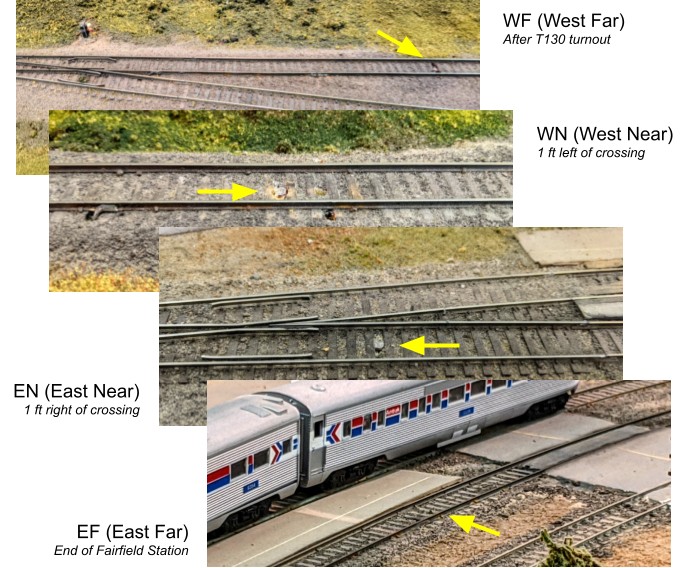The Randall Museum in San Francisco hosts a large HO-scale model railroad. Created by the Golden Gate Model Railroad Club starting in 1961, the layout was donated to the Museum in 2015. Since then I have started automatizing trains running on the layout. I am also the model railroad maintainer. This blog describes various updates on the Randall Museum Model Railroad and I maintain a separate tech blog for all my electronics & software not directly related to Randall.
2020-12-27 - Grade Crossing Installed at Fairfield
Category RandallAfter about 3-4 hours of work, the main two-lane cantilever grade crossing is now installed at Fairfield:
First run, before adjusting sensor sensitivity or timings -- works really nicely out of the box.
And it’s functional, with the Grade Crossing Pro/2 module, the sound module, and speaker!
The control module is installed under the layout:
The speaker is installed next to the Fairfield control panel, with a toggle to cut off the sound as needed:
Each photoresistor was prepared with a little wire extension, that will be mounted with a PCB 2-position terminal:
The leads off the PCB terminals are cut, and double-face tape is applied for mounting under the layout. Kapton tape is used to isolate both leads.
Under the layout, the terminal is just held in place using double-face tape. It makes it easy to then add the connection towards the GCP/2 module without having to solder:
The wires leading to the photoresistors are somewhat rigid and help maintain the resistor at the correct height between the ties. Here are the four sensors locations:
All the sensors connect directly to the module using twisted pair wire.
The cantilever LEDs are connected via a terminal which is used to insert the two 1 kΩ resistors in series.
One drawback of this cantilever is that it looks better when seen from the other side. It’s a dual-lane yet the lights on the left lane (where that orange truck is) are facing away from the layout viewers. It is of course more prototypical that way.
Jim also got single-mast crossing lights. Later we can mount them on the other side of the crossing, connected to the same control module.
The immediate next step is to go back to the GCP/2 documentation and optionally adjust the sensors' sensitivity. I wanted to try it “out of the box” first, and it worked nicely with our overhead lighting, so I may leave it as is.
One thing to remember is that if the overhead lights are not on, the crossing will activate and ring the bell. That’s the main reason why I put a cut-off switch next to the speaker. In the Randall Museum train room, we have different circuits for the overhead lights, and sometimes folks forget to turn them all on when opening the museum in the morning. I should try a few combinations to see which ones trigger the crossing. Yet let’s see it in a positive way: we now have an audible warning system to let museum staff know that they forgot to turn on some overhead light circuit, isn’t that nice?






